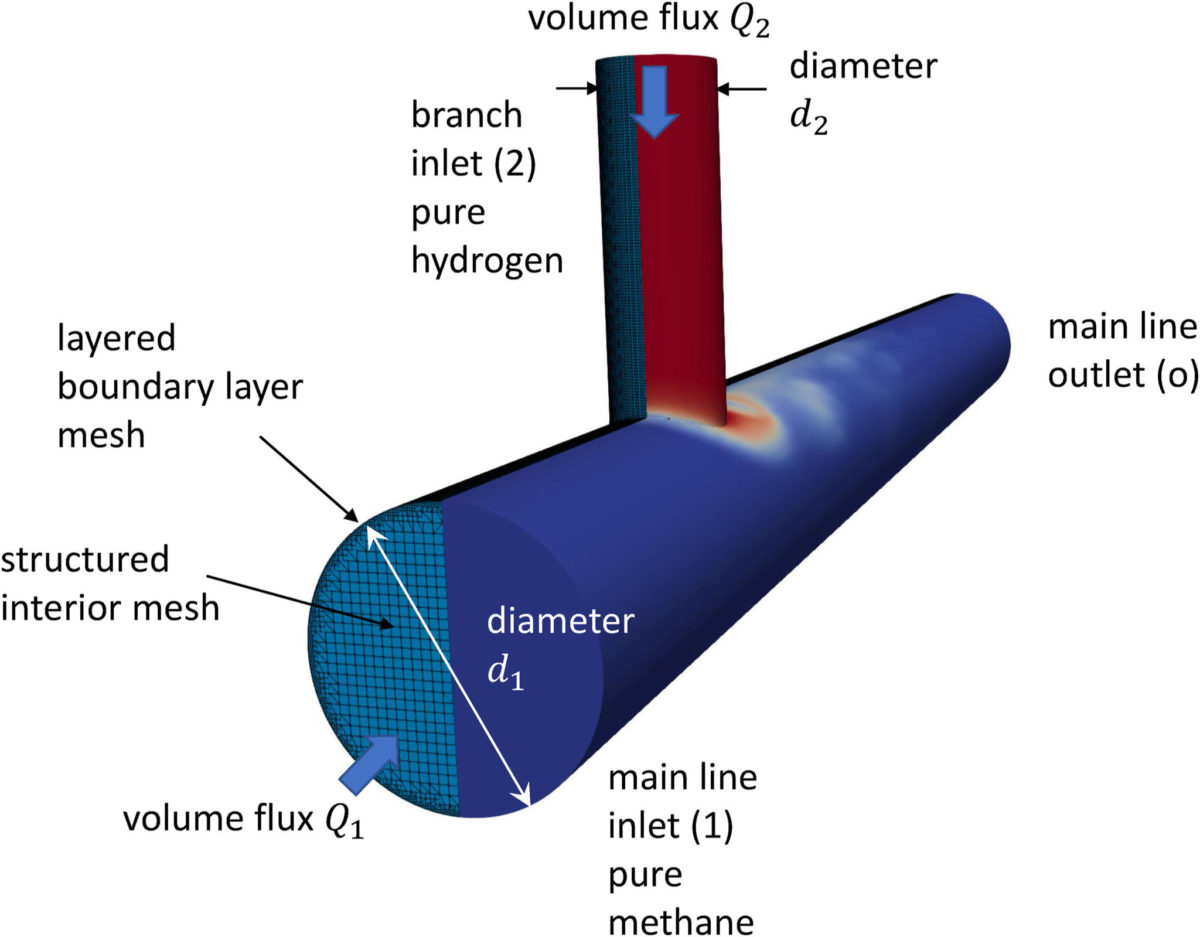From pv magazine Global
University College London researchers have said in a new study that the pumping of hydrogen into gas networks poses risks and requires a rethinking of usual blending techniques.
“The strongly inhomogeneous distribution of hydrogen within the pipe flow and on the pipe walls could indicate the location of potential pipe material degradation, including embrittlement effects of gas pipelines,” the researchers said in the International Journal of Hydrogen Energy.
They focused on the common blending method, based on the injection of hydrogen through a side branch into a main gas header pipe (T-junction).
“The low molecular mass of hydrogen reduces the penetration of a side-branch flow and increases the buoyancy forces leading to stratification with high hydrogen concentrations on the upper pipe surface, downstream of the branch,” the team said.
“Top-side injection leads to the hydrogen concentration remaining >40% for up to eight pipe diameters from the injection point for volumetric dilutions less than 30%. Under-side injection promotes mixing within the flow interior and reduces wall concentration at the lower surface, compared to top-side injection.”
Author: SERGIO MATALUCCI
This content is protected by copyright and may not be reused. If you want to cooperate with us and would like to reuse some of our content, please contact: editors@pv-magazine.com.








By submitting this form you agree to pv magazine using your data for the purposes of publishing your comment.
Your personal data will only be disclosed or otherwise transmitted to third parties for the purposes of spam filtering or if this is necessary for technical maintenance of the website. Any other transfer to third parties will not take place unless this is justified on the basis of applicable data protection regulations or if pv magazine is legally obliged to do so.
You may revoke this consent at any time with effect for the future, in which case your personal data will be deleted immediately. Otherwise, your data will be deleted if pv magazine has processed your request or the purpose of data storage is fulfilled.
Further information on data privacy can be found in our Data Protection Policy.